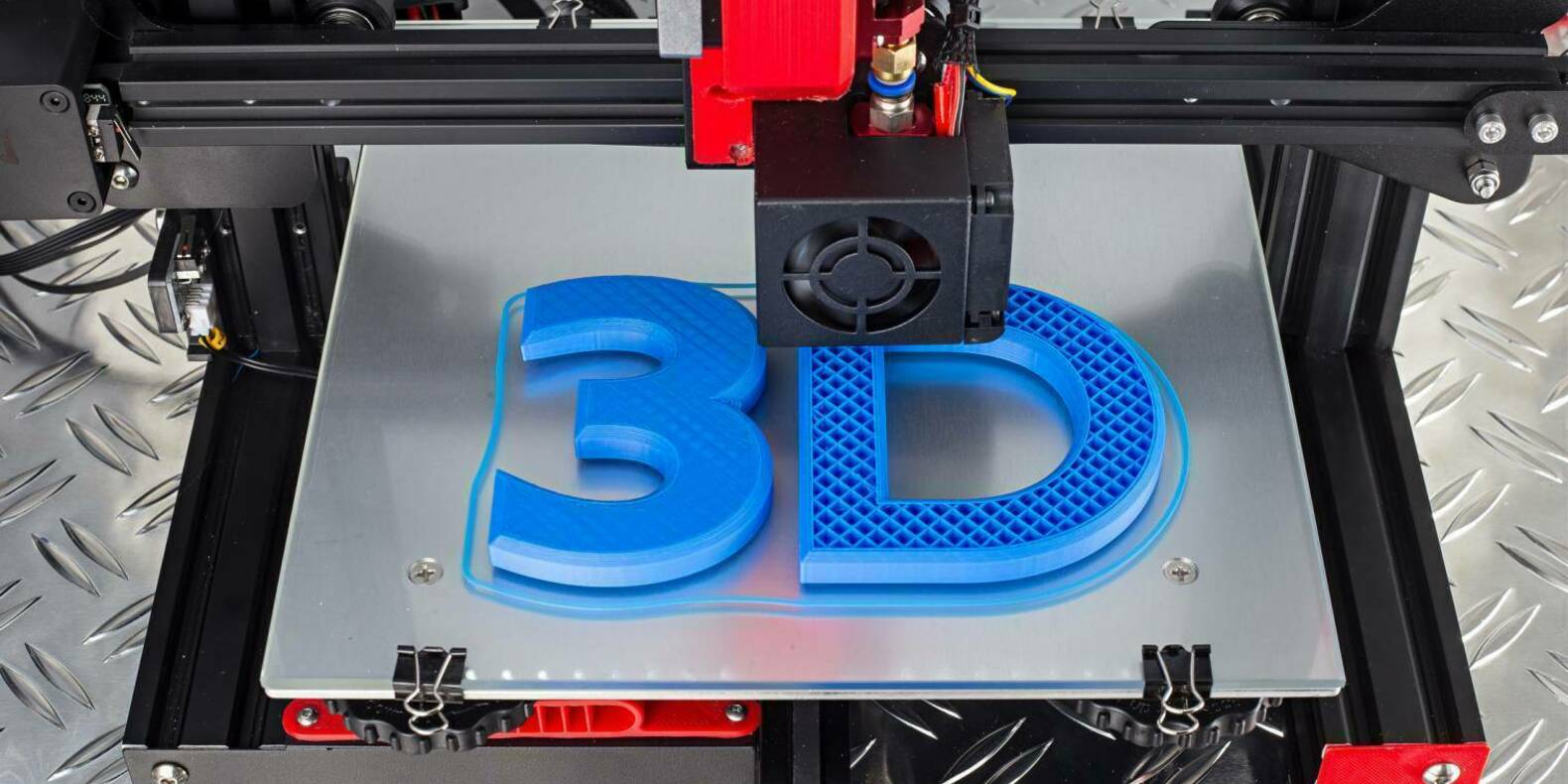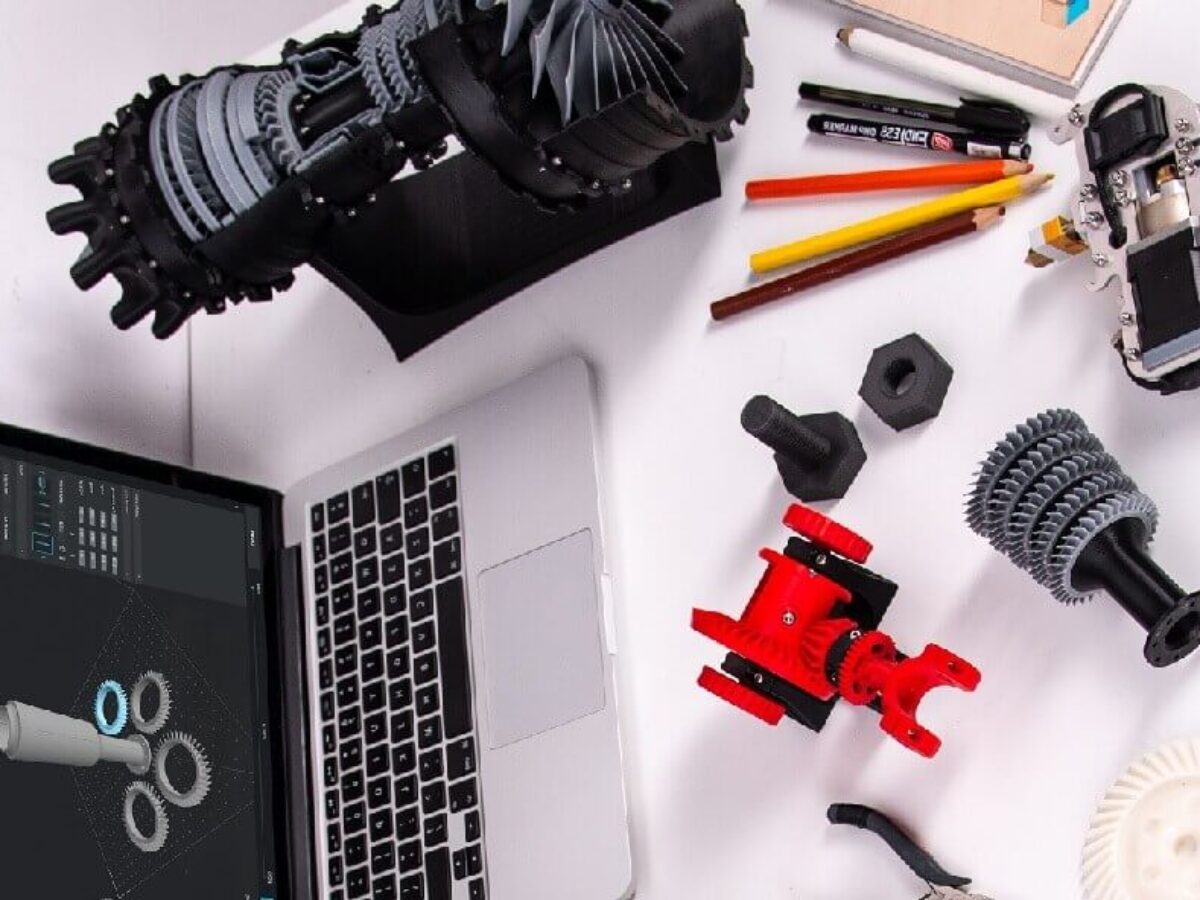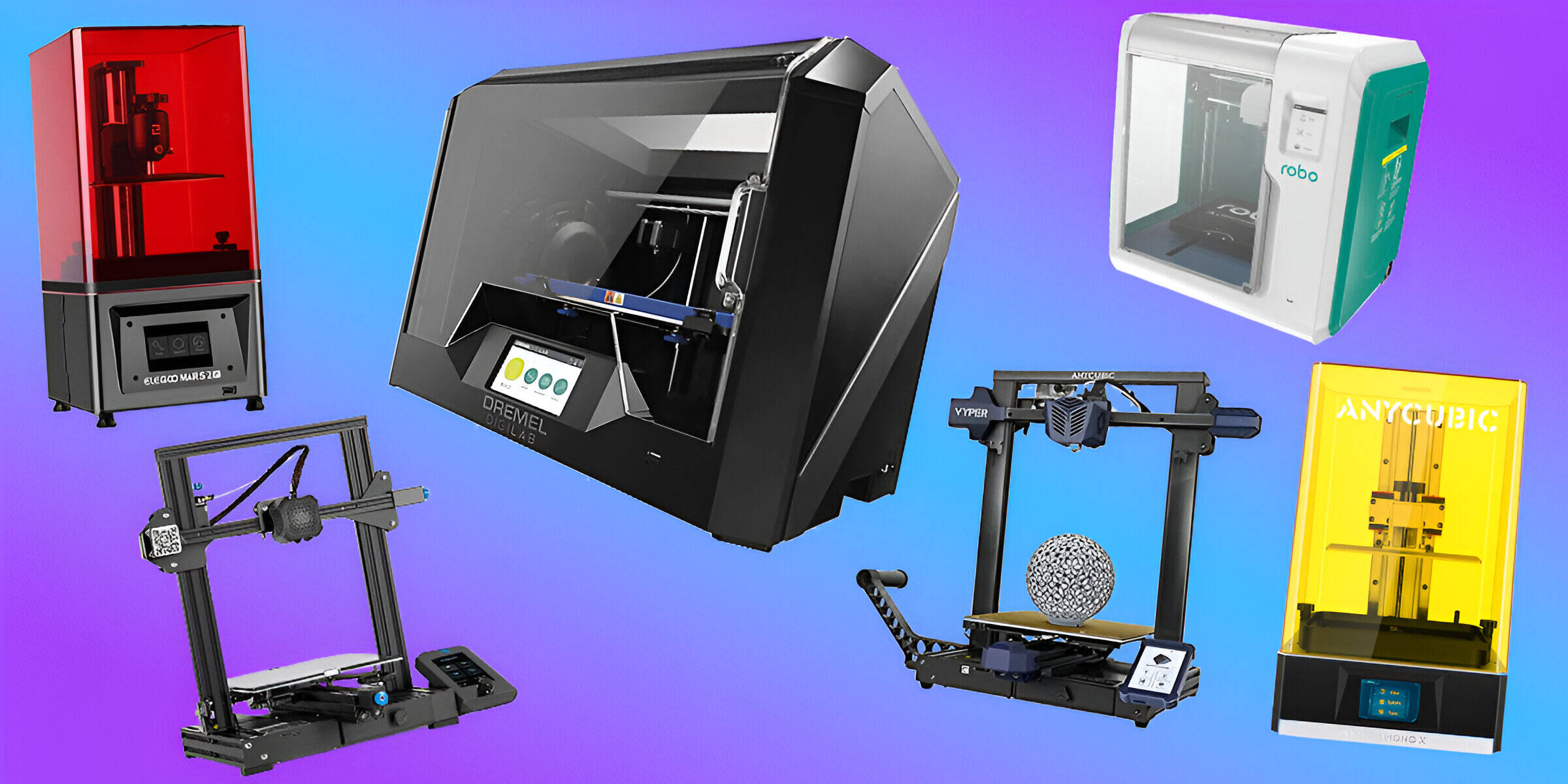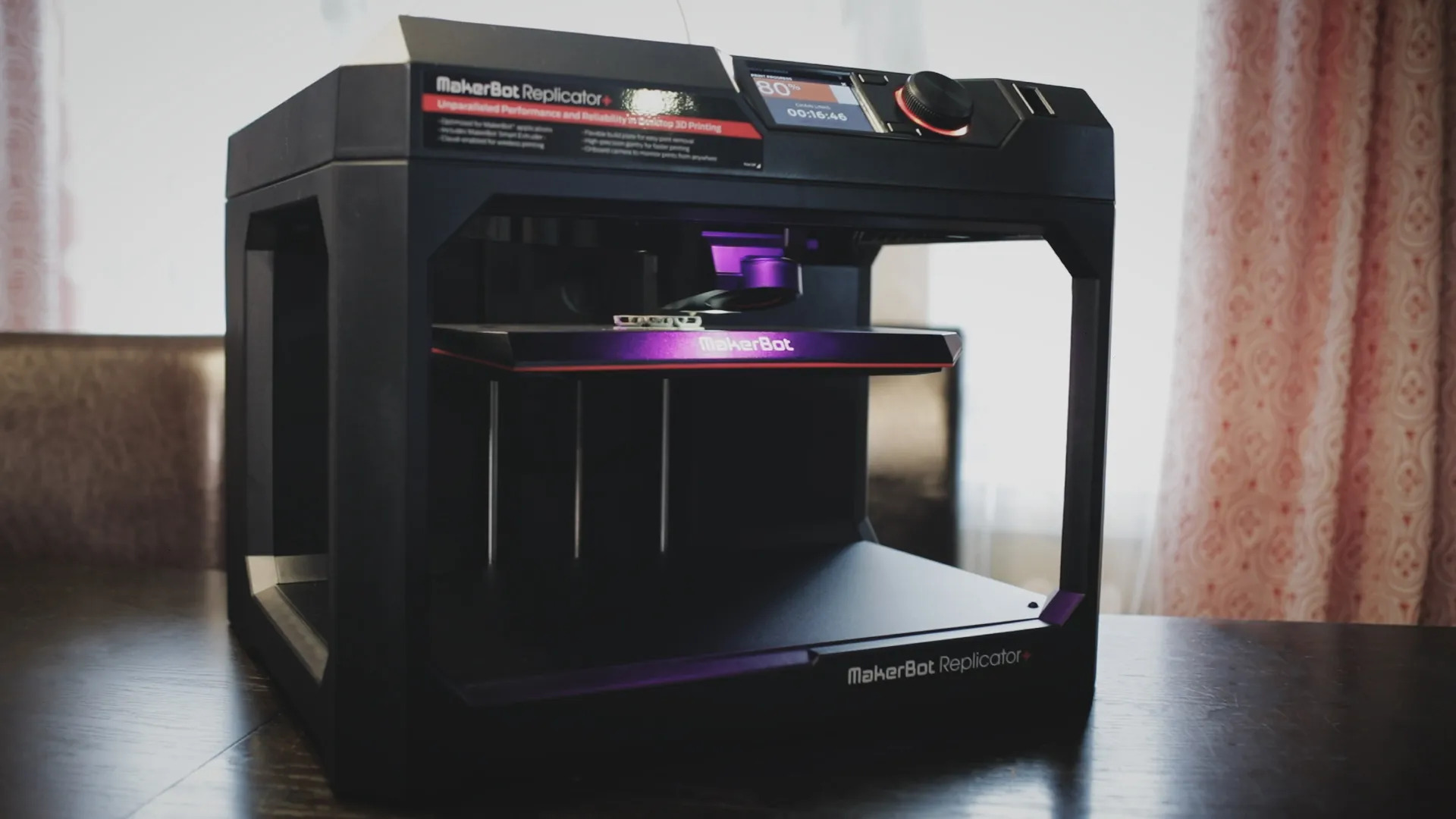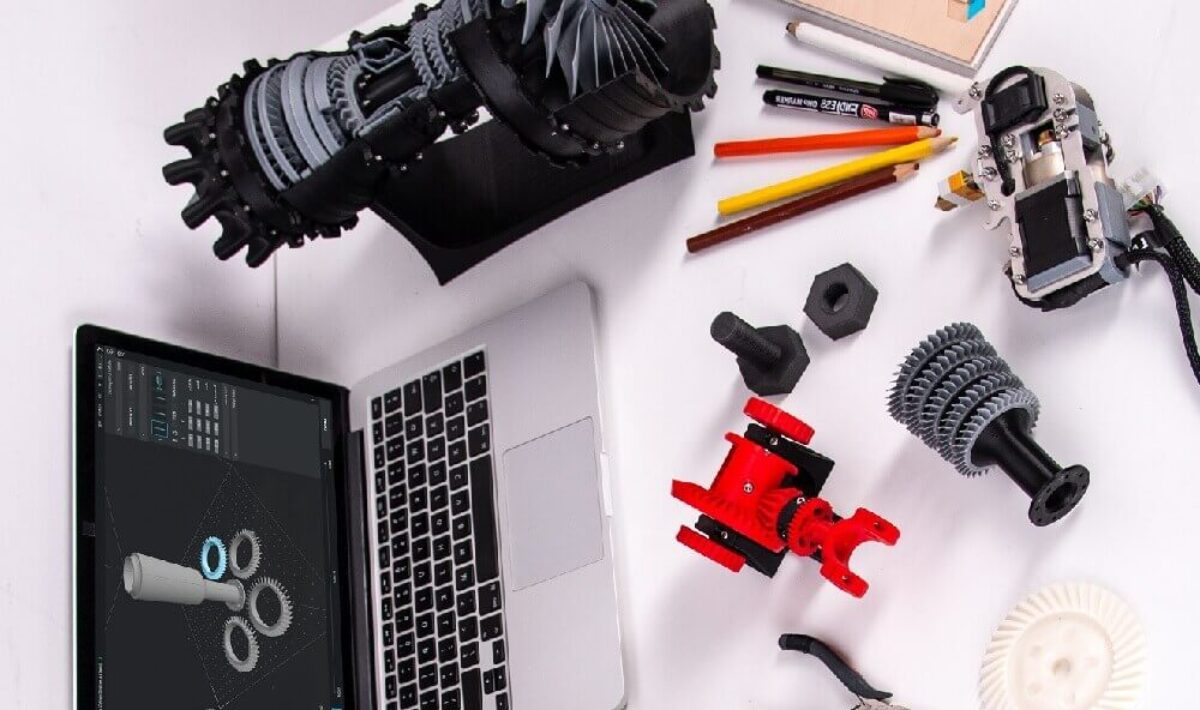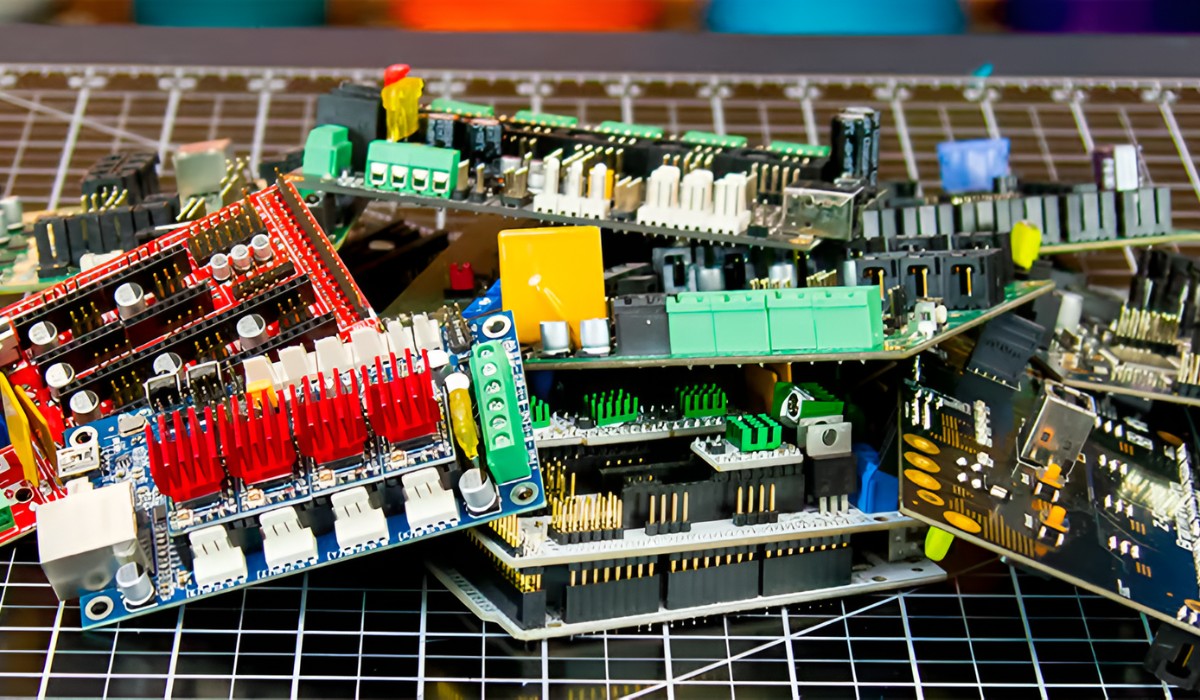Introduction
Welcome to the world of 3D printing, a revolutionary technology that has transformed various industries and unlocked endless possibilities for creativity and innovation. Whether you’re a hobbyist, designer, engineer, or manufacturer, understanding the file types used in 3D printing is crucial to ensure compatibility and successful printing.
In this article, we will explore the different file types commonly used in 3D printing and discuss their features, advantages, and considerations. By gaining insights into these file formats, you will be able to make informed decisions and optimize your printing process.
Before diving into the specific file types, let’s have a quick overview of 3D printing and its remarkable capabilities. Also known as additive manufacturing, 3D printing is a process that creates solid, three-dimensional objects from digital models by layering materials on top of each other. This technology enables users to transform their ideas into physical creations and materialize intricate designs that were once unimaginable.
As with any manufacturing process, 3D printing requires the use of the right file formats to convey design information to the printer. Each file format has its characteristics, including the level of detail, geometry, color information, and compatibility with different printers and software.
Now, let’s take a closer look at the various file types commonly used in 3D printing and their specific purposes.
Overview of 3D Printing
Before we discuss the different file types used in 3D printing, let’s delve deeper into the technology itself. 3D printing, also known as additive manufacturing, is a process that allows objects to be created layer by layer from a digital design. This revolutionary technology has gained widespread popularity in various fields, including manufacturing, healthcare, fashion, and even food industry.
The process of 3D printing starts with a digital model or CAD (Computer-Aided Design) file. This file contains the specifications of the object to be printed, including its shape, dimensions, and intricate details. The 3D printer then interprets the digital model and builds the object layer by layer using different materials, such as plastics, metals, ceramics, or even bioinks.
One of the key advantages of 3D printing lies in its flexibility and versatility. Unlike traditional manufacturing methods, 3D printing allows for the creation of complex and customized objects with ease. It eliminates the need for molds, which can be costly and time-consuming to produce. This means that intricate and unique designs can be easily reproduced without the need for extensive setup or tooling.
Furthermore, 3D printing offers significant benefits in terms of resource efficiency. The process only uses the necessary materials, minimizing waste and reducing the environmental impact. It also enables on-demand manufacturing, eliminating the need for stockpiling inventory and reducing storage costs.
With the advancements in 3D printing technology, the quality and capabilities of printed objects have significantly improved. High-resolution printers are capable of producing intricate details and smooth surface finishes. This opens up new possibilities in various industries, such as jewelry making, architectural modeling, and even healthcare, where 3D-printed prosthetics and implants are now a reality.
Overall, 3D printing has revolutionized the way objects are manufactured and has opened up limitless possibilities in design, customization, and manufacturing efficiency. Now that we have a better understanding of 3D printing as a whole, let’s move on to explore the different file types used in this fascinating technology.
File Types for 3D Printing
In the world of 3D printing, there are several file formats specifically designed to store and transmit 3D model data. Each file type has its own unique characteristics, features, and compatibility with various printers and software. Let’s take a closer look at some of the most common file types used in 3D printing:
- STL (Standard Tessellation Language): STL is the most widely used file format in the 3D printing industry. It represents the 3D model as a collection of triangular facets (mesh) and is compatible with almost all 3D printers. However, STL files do not store color or texture information, making them suitable for basic geometric shapes and prototypes.
- OBJ (Object File Format): OBJ files are another popular file format in 3D printing. They contain both geometry and color information, making them suitable for more complex and visually appealing models. OBJ files can be used for both 3D printing and rendering purposes, and they are supported by various software applications.
- AMF (Additive Manufacturing File Format): AMF is an advanced file format specifically developed for 3D printing. Unlike STL, AMF files can store color, texture, and material information, allowing for greater design fidelity. AMF files are compatible with most 3D printers, but not all software applications fully support this format.
- 3MF (3D Manufacturing Format): 3MF is a relatively new file format that aims to standardize 3D printing data. It offers more features and capabilities than STL, including color, texture, multiple objects within a single file, and even slice information. 3MF files can provide improved compatibility and ease of use, but not all printers and software support this format yet.
- G-code: G-code is a programming language used to control 3D printers. It contains a series of instructions that direct the printer’s movements, extrusion rates, and other parameters. While not a traditional 3D model file, G-code is essential for translating 3D models into physical objects. Slicing software converts 3D models into G-code files, which can be directly executed by 3D printers.
Choosing the right file type for your 3D printer depends on various factors, including the complexity of the model, desired level of detail, color requirements, and the compatibility of your printer and software. It’s important to ensure that the file format you choose is supported by your specific hardware and software combination to avoid any compatibility issues during the printing process.
Now that we have explored the different file types used in 3D printing, let’s move on to discussing the factors to consider when choosing the right file type for your 3D printing projects.
STL (Standard Tessellation Language)
STL, which stands for Standard Tessellation Language, is the most widely used file format in the 3D printing industry. It represents the 3D model as a collection of triangular facets, forming a mesh that defines the object’s shape.
STL files are compatible with almost all 3D printers and can be easily generated from various software applications. They provide a simple and efficient way to transfer 3D models for printing. However, it’s important to note that STL files do not store color, texture, or other advanced details. They mainly focus on the geometry of the model, making them suitable for basic geometric shapes and prototypes.
STL files can be created in two formats: ASCII and binary. ASCII format is human-readable and consists of plain text, while the binary format is more compact and efficient for file storage. The choice between ASCII and binary STL files depends on the specific requirements of the 3D printer and software you’re using.
One advantage of STL files is that they provide a universal format that can be imported into various 3D printing software and slicers. This simplifies the process of preparing the model for printing by allowing you to make necessary adjustments, such as scaling, rotating, or adding supports.
However, it’s important to keep in mind that STL files may result in larger file sizes compared to other file formats due to the representation of geometry as individual triangles. This can impact the efficiency and speed of the printing process, especially for complex or large-scale models.
It’s also worth noting that the fidelity of the printed model depends on the resolution of the STL file. A higher triangle count leads to a smoother representation of curved surfaces and intricate details. However, increasing the triangle count also increases the file size and may require longer processing times.
In summary, STL files are widely supported and compatible with almost all 3D printers. They provide a straightforward way to transfer geometry information for printing. However, due to their lack of color or texture data, STL files are best suited for basic geometric shapes and prototypes. When using STL files, it’s important to consider the desired level of detail, resolution, and printing efficiency to achieve the best results.
OBJ (Object File Format)
OBJ, short for Object File Format, is another commonly used file format in the world of 3D printing. OBJ files store both geometry and color information, making them suitable for more complex and visually appealing models.
An OBJ file represents a 3D model as a collection of vertices, faces, and texture coordinates. It supports a wide range of geometry types, including polygonal meshes, curves, and curves with surfaces. This flexibility allows for the creation of highly detailed and organic shapes.
One of the significant advantages of OBJ files is their compatibility with various software applications. OBJ has become a universal format for sharing 3D models across different design and rendering software. This ensures seamless collaboration and the ability to modify the model in different programs before 3D printing.
In addition to geometry, OBJ files can also store color information, including vertex color and texture coordinates. This makes OBJ files suitable for 3D models that require realistic textures or accurate color representation. Artists and designers can assign textures or materials to specific parts of the model, enabling the printing of vibrant and visually appealing objects.
However, it’s important to note that OBJ files can be larger in size compared to other file formats, especially when color and texture information is included. This may affect the efficiency and speed of the printing process, particularly for models with intricate details or complex textures.
Another consideration when working with OBJ files is the compatibility with 3D printers. While OBJ files can be imported into most 3D printing software, not all printers may support this format out-of-the-box. In such cases, it may be necessary to convert the OBJ file into a compatible format, such as STL or AMF.
Overall, OBJ files are a versatile and widely supported file format in 3D printing. They allow for the storage of both geometry and color information, providing greater design fidelity and visual appeal. When working with OBJ files, it’s important to consider the file size, compatibility with printing software and hardware, and the desired level of detail to achieve optimal results.
AMF (Additive Manufacturing File Format)
AMF, which stands for Additive Manufacturing File Format, is a file format specifically developed for 3D printing. Unlike the STL format that primarily focuses on geometry, AMF files can store additional information such as color, texture, and material properties. This makes them capable of representing complex and visually detailed 3D models.
One of the key advantages of AMF files is their ability to store color information. This allows 3D models to be printed with accurate and vibrant colors, making them particularly suitable for applications that require realistic visual representation, such as architectural models and display prototypes.
In addition to color, AMF files can also store texture information, enabling the printing of models with intricate surface textures. This is especially useful for creating objects with realistic textures like wood grains, stone, or fabric patterns.
Furthermore, AMF files support material properties, allowing for the representation of different materials within a single model. This feature is particularly beneficial in applications where design incorporates multiple materials or requires the use of specific material properties, such as flexibility or transparency.
Another advantage of the AMF format is its capability to define multiple objects within a single file, along with their individual properties and relationships. This streamlines the printing process and reduces the need for separate files or complex assembly instructions.
However, it’s important to note that not all 3D printers and software applications fully support AMF files. While the format is gaining popularity, compatibility can vary, and it’s important to check if your printer and software are capable of handling AMF files before using them.
Compared to the traditional STL format, AMF files can be larger in size due to the additional information they store. This may result in longer processing times and increased memory requirements during printing. Therefore, it’s important to consider these factors when working with AMF files, especially for large or complex models.
In summary, the AMF file format provides enhanced capabilities for representing 3D models in additive manufacturing. With its support for color, texture, material properties, and multiple objects in a single file, AMF files offer extensive possibilities for creating visually stunning and detailed 3D printed objects. However, it’s necessary to ensure compatibility with your 3D printer and software before using AMF files for your projects.
3MF (3D Manufacturing Format)
3MF, which stands for 3D Manufacturing Format, is a relatively new file format developed specifically for 3D printing. It aims to standardize the way 3D printing data is transmitted, allowing for greater compatibility and ease of use across different software, printers, and services.
One of the key advantages of the 3MF format is its ability to store a wide range of information within a single file. This includes geometry, color, texture, material properties, and even slice information. By encapsulating all these details into one file, 3MF simplifies the 3D printing process and facilitates seamless data transfer between different software applications and printers.
The 3MF format also allows for the representation of multiple objects within a single file. Each object can have its own set of properties, simplifying the handling of complex assemblies or multi-part designs. This capability is particularly useful for applications such as engineering prototypes, model trains, or architectural models, where intricate assemblies need to be 3D printed.
Furthermore, 3MF files can store slice information, which defines how the model should be divided into layers for printing. This information includes layer thicknesses, printing parameters, and support structures. Having slice information embedded in the file streamlines the printing process, eliminating the need for separate slice files or relying on external slicing software.
3MF files also support advanced features such as encryption, which allows for secure transmission and protection of sensitive 3D printing data. This can be beneficial for industries that require confidentiality and intellectual property protection.
While the 3MF format offers great potential, it’s important to note that not all software applications and 3D printers fully support it yet. However, the adoption of 3MF is steadily growing, and many major players in the 3D printing industry are working towards greater compatibility with this file format.
In summary, 3MF is a promising file format that aims to standardize 3D printing data and simplify the process of transferring 3D models to printers. With its ability to store geometry, color, texture, material properties, slice information, and support for multiple objects within a single file, 3MF offers extensive possibilities for streamlined and efficient 3D printing workflows. As adoption of the 3MF format continues to expand, it holds the potential to become a standard format for the future of 3D printing.
G-code
G-code is a programming language used in 3D printing to control the movements, extrusion rates, and other parameters of the 3D printer. It is created by slicing software, which takes a 3D model and generates the instructions necessary for the printer to create the object layer by layer.
G-code consists of a series of commands and parameters that instruct the 3D printer how to operate. These commands include instructions for moving the printer’s motors, controlling the extruder, adjusting the temperature, and managing other settings specific to the printer.
One of the primary advantages of using G-code is its ability to control the fine details of the printing process. It allows for precise control over the printer’s movements, enabling the creation of complex geometries and intricate details. With G-code, you have the flexibility to adjust parameters such as print speed, layer height, and infill density to achieve the desired printing results.
G-code also enables customization and experimentation in 3D printing. You can modify the G-code manually to adjust specific parameters or optimize the print settings for your specific needs. This gives you the freedom to fine-tune the printing process and explore new possibilities in material usage, layer adhesion, or surface finish.
While G-code is essential for controlling the printer, it is not a 3D model file format. Instead, it provides instructions for the printer to follow based on a pre-existing model. The G-code file works in conjunction with the 3D model file, which is typically in formats like STL, OBJ, or AMF.
It’s worth noting that the compatibility of G-code files depends on the specific printer and slicing software being used. Different printers may have variations in their G-code dialects or specific commands they support. Therefore, it’s essential to generate G-code files compatible with your specific printer to ensure successful printing.
In summary, G-code plays a critical role in 3D printing by providing the instructions necessary for the printer to create objects. It offers fine control over print settings and allows for customization and experimentation. While G-code is not a 3D model file format itself, it complements the 3D model file and enables the translation of virtual designs into physical objects.
Choosing the Right File Type for Your 3D Printer
When it comes to 3D printing, selecting the appropriate file type is crucial to ensure compatibility and successful printing. Several factors should be considered when choosing the right file type for your 3D printer:
1. Model Complexity: Consider the complexity of your 3D model. If it consists of basic geometric shapes or prototypes, STL files might be sufficient. However, for more complex and visually detailed models with colors, textures, or material properties, formats like OBJ, AMF, or 3MF are more suitable.
2. Desired Level of Detail: Determine the level of detail required for your printed object. Higher-resolution formats, such as AMF or 3MF, allow for greater fidelity and finer details compared to STL files. Consider the specific features, textures, or intricate geometries you want to capture in your model.
3. Color Requirements: If your design relies heavily on accurate color representation, formats like OBJ, AMF, or 3MF that support color information should be chosen. STL files, on the other hand, do not store color information and may not be suitable for color-dependent prints.
4. Compatibility: Ensure that the chosen file format is compatible with your 3D printer and software. While STL is universally supported, other formats like AMF or 3MF may require specific software or printer compatibility. Check the documentation or consult the manufacturer to verify compatibility.
5. File Size: Consider the file size of the chosen format. STL files, although widely supported, can result in larger file sizes compared to other formats. Larger files may require more processing time and storage capacity. Optimize the file size based on the capabilities and limitations of your 3D printer and software.
6. Workflow Efficiency: Evaluate the workflow efficiency of the chosen file format. Some formats, like 3MF, allow for encapsulating multiple objects, slice information, or material properties within a single file. These features can streamline the printing process and reduce the need for managing multiple files or additional instructions.
By considering these factors, you can choose the file type that best suits your 3D printing requirements. It’s also important to keep in mind that not all 3D printers and software applications support every file format. Always check the compatibility and capabilities of your specific hardware and software combination to ensure seamless printing.
Conclusion
The world of 3D printing offers a wide array of file types to choose from, each with its unique features and compatibility. Understanding the different file types and their suitability for your 3D printer is crucial to ensure successful printing and desired results.
STL files, with their widespread compatibility, are ideal for basic geometric shapes and prototypes. OBJ files support color and texture information, making them suitable for visually detailed models. AMF files provide even more advanced features like color, texture, and material properties. 3MF files strive to standardize 3D printing data and offer greater compatibility and streamlined workflows. Lastly, G-code serves as the language that controls the movements and parameters of the 3D printer.
When choosing the right file type, factors such as model complexity, desired level of detail, color requirements, compatibility, file size, and workflow efficiency should be considered. It’s essential to ensure that the chosen file type aligns with the capabilities of your 3D printer and software to avoid compatibility issues or compromised printing quality.
As the field of 3D printing continues to evolve, it’s important to stay updated with advancements in file formats and software compatibility. New formats may emerge, offering improved features and enhanced performance. The selection of the right file type for your 3D printer ultimately comes down to understanding your specific needs and leveraging the capabilities of your equipment and software.
By carefully considering these factors and staying informed about the latest developments, you can optimize your 3D printing workflow and bring your designs to life with precision, creativity, and efficiency.







